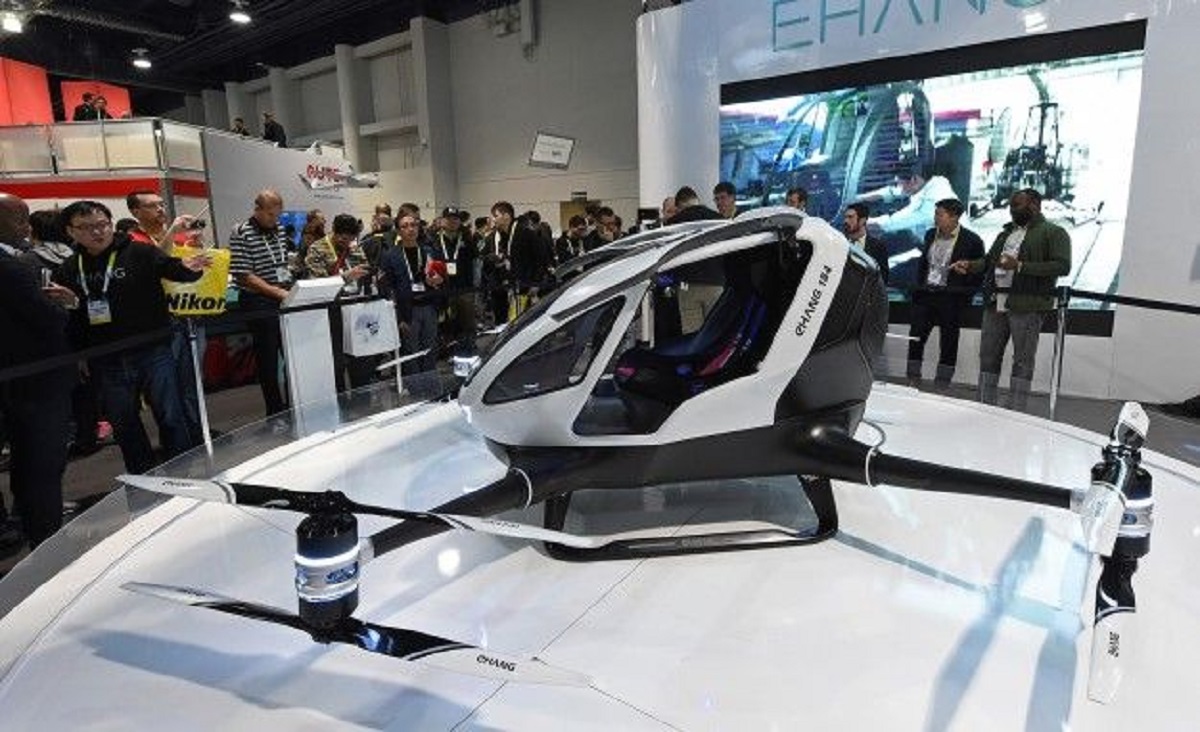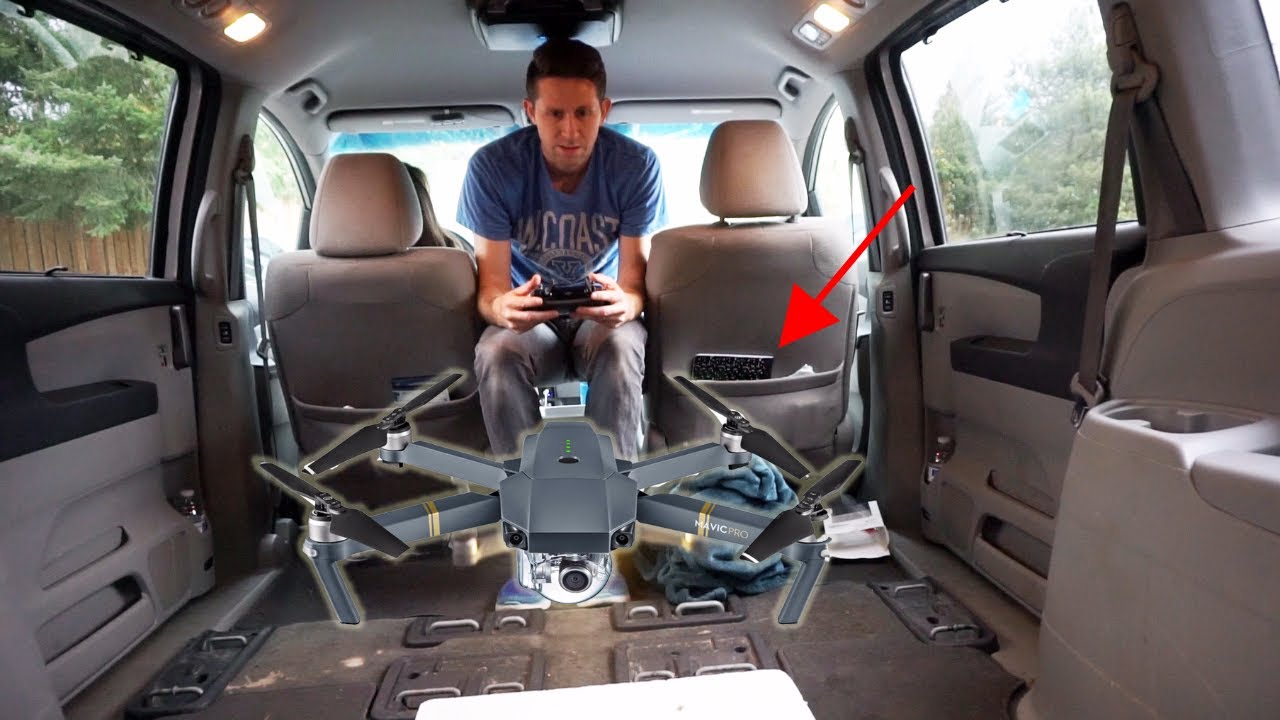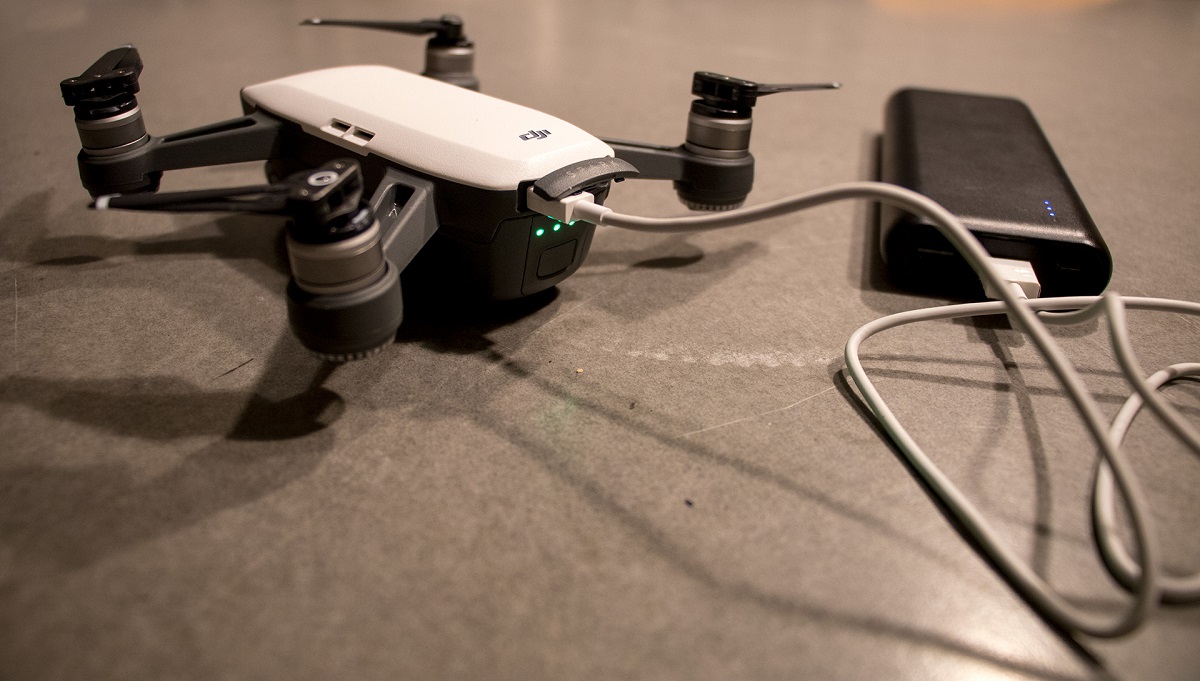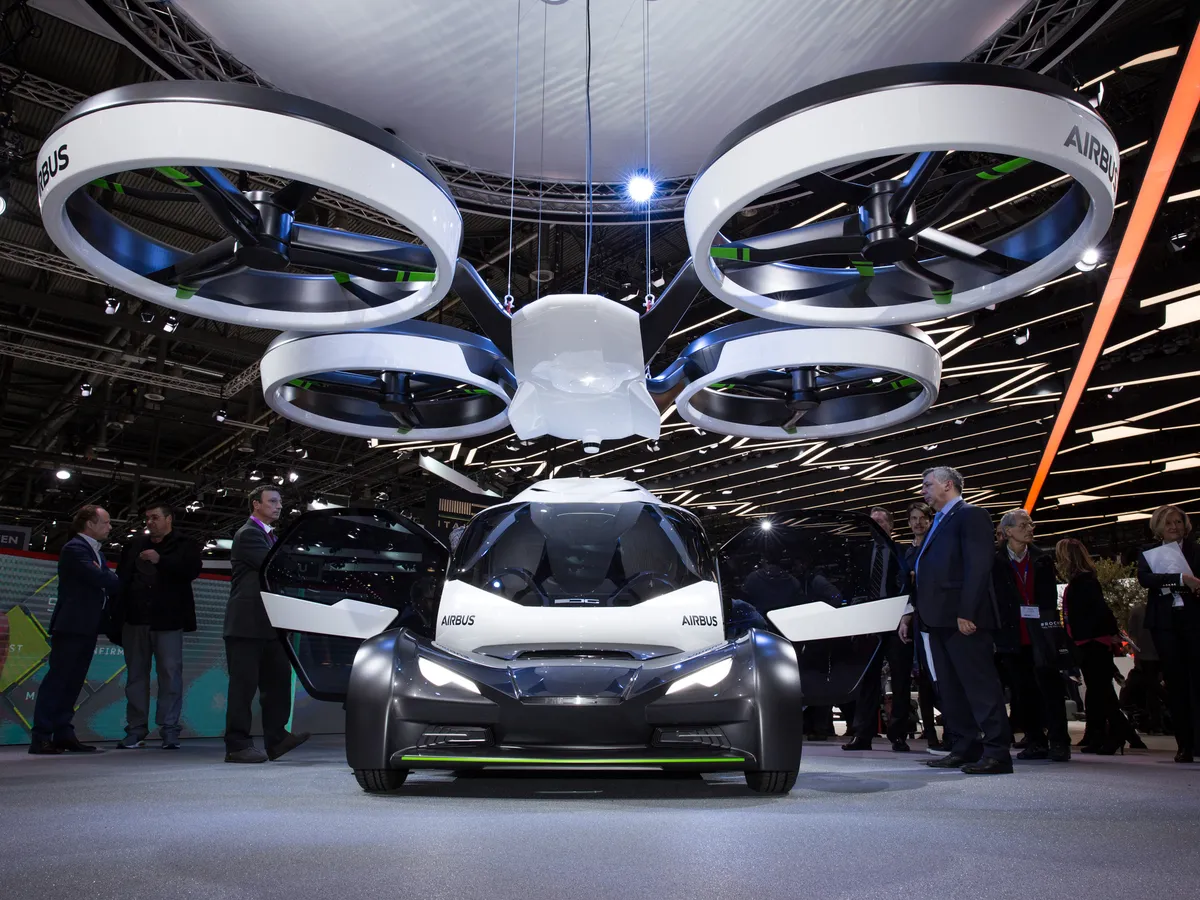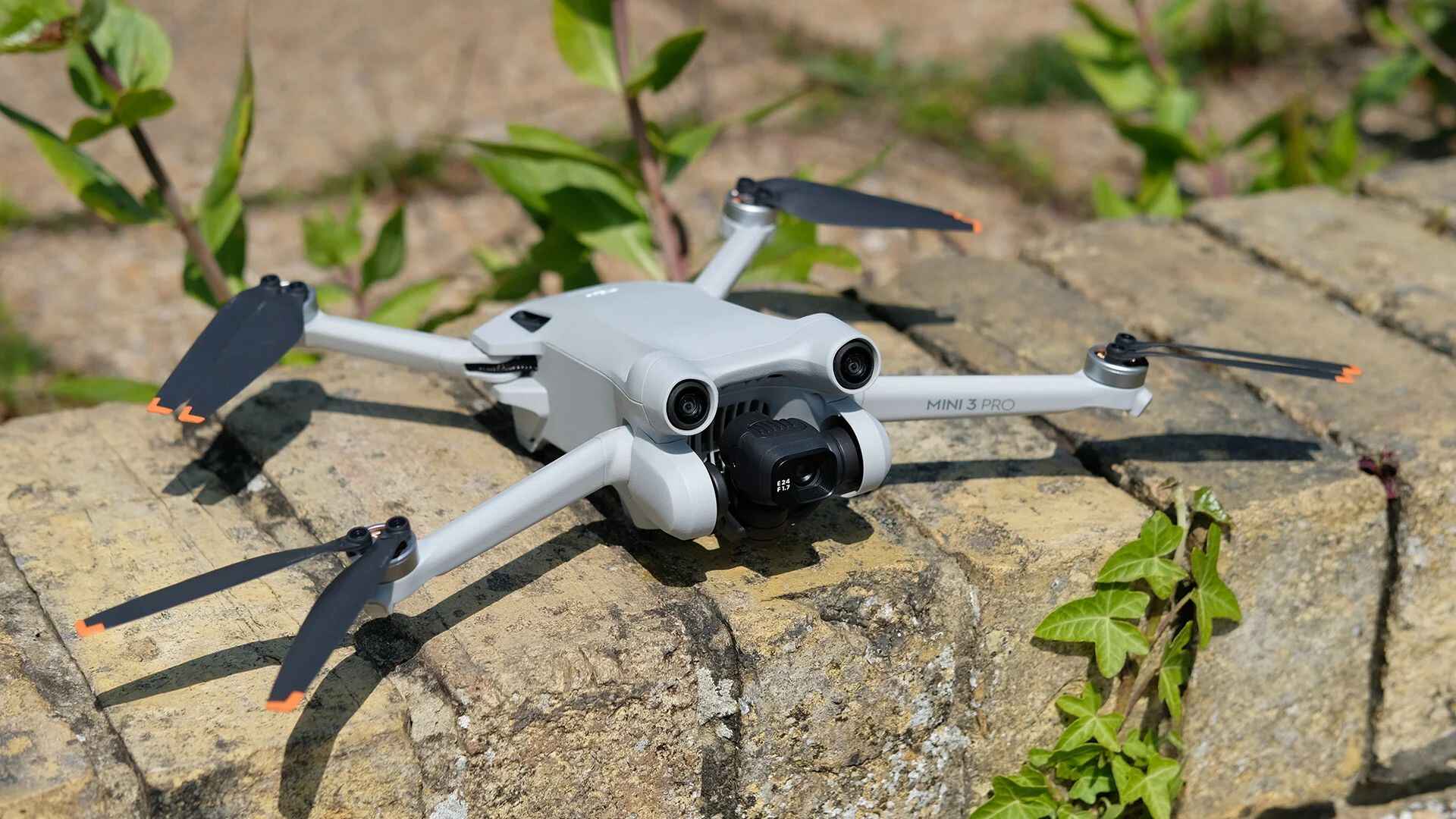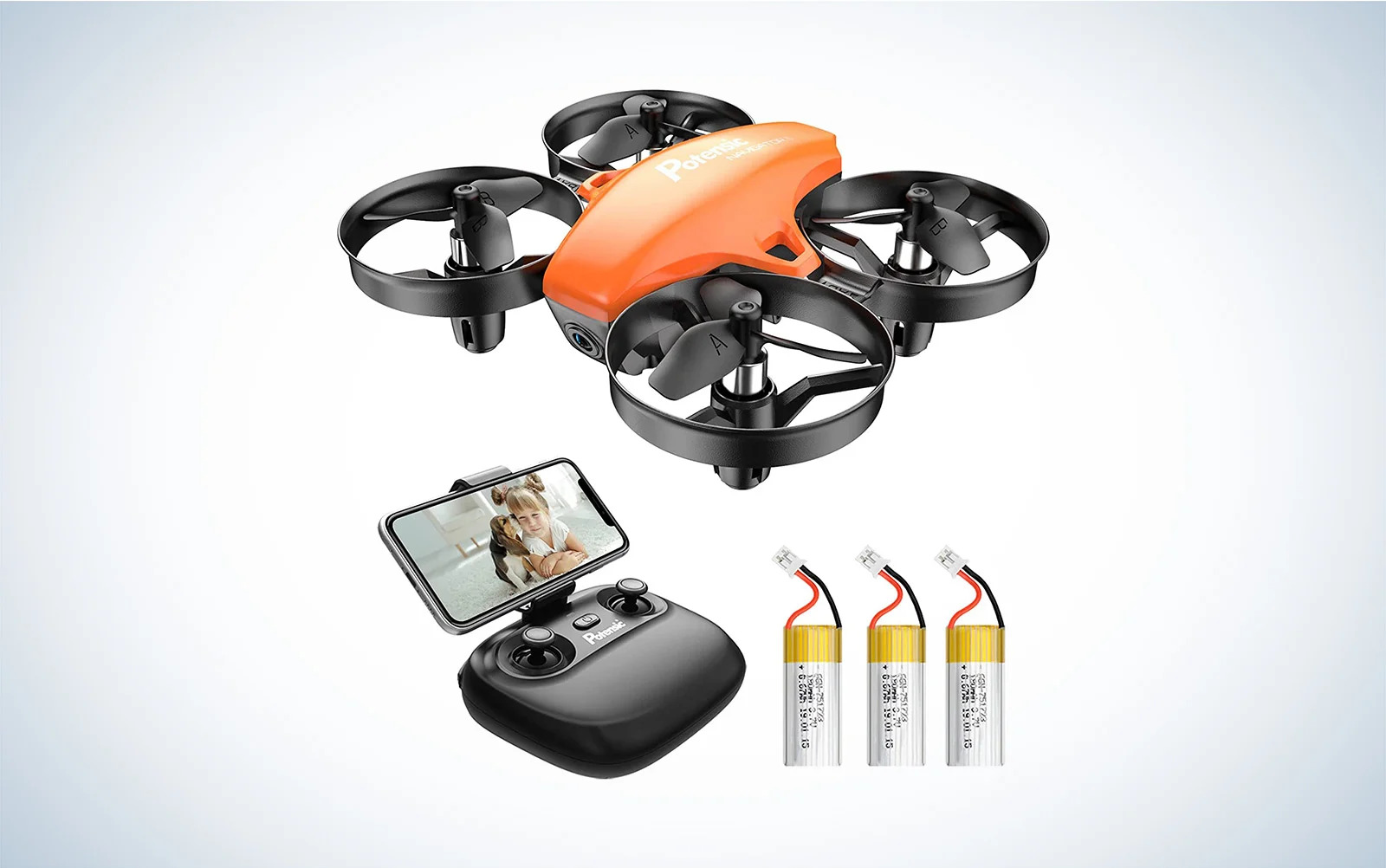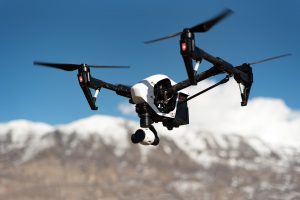Introduction
Welcome to the world of drone cars, where cutting-edge technology and transportation merge to revolutionize the way we move. In recent years, the concept of drone cars has emerged as a promising solution for improving efficiency, reducing congestion, and enhancing overall transportation systems.
Also known as autonomous or self-driving cars, drone cars utilize advanced sensors, robotics, and artificial intelligence to navigate and operate on their own, without the need for human intervention. This technology promises to reshape the future of transportation, as we know it, offering a host of benefits and exciting possibilities.
Drone cars have the potential to transform various industries and aspects of our lives. From personal transportation to delivery services and public transportation, these futuristic vehicles aim to make our journeys safer, more convenient, and more sustainable. However, with every technological advancement comes challenges and controversies, including concerns regarding privacy, security, and ethical dilemmas.
In this article, we will delve deeper into the world of drone cars, exploring their history, functionality, applications, and future prospects. We will also examine the challenges and controversies surrounding this technology, providing a comprehensive overview of the exciting yet complex world of drone cars.
Ladies and gentlemen, fasten your seatbelts as we embark on a thrilling journey into the realm of drone cars, where science fiction meets reality.
What is a Drone Car?
A drone car, also known as an autonomous or self-driving car, is a vehicle that is capable of navigating and operating on its own, without the need for human intervention. These vehicles utilize a combination of advanced technologies, including sensors, robotics, and artificial intelligence, to perceive their environment, make decisions, and control their movements.
Unlike traditional vehicles, which rely on human drivers to steer, accelerate, and brake, drone cars are equipped with a range of sensors such as cameras, radar, lidar, and GPS to gather information about their surroundings. This data is then processed by sophisticated algorithms, allowing the vehicle to understand its environment and make real-time decisions.
Drone cars have the ability to analyze traffic patterns, detect obstacles, interpret road signs and signals, and even react to pedestrian movements. They use this information to autonomously navigate roads, follow traffic rules, and reach their destinations safely and efficiently.
By eliminating the need for human drivers, drone cars have the potential to offer numerous benefits. They can help reduce traffic congestion, as they can communicate with each other and optimize routes, leading to smoother traffic flow. Additionally, autonomous vehicles have the potential to increase road safety, as they are not prone to human errors, distractions, or fatigue.
It is important to note that drone cars are not limited to passenger vehicles. They can also encompass other types of vehicles, such as delivery trucks, taxis, and public transport. The concept of drone cars extends beyond personal transportation and aims to reshape various aspects of the transportation system.
With continuous advancements in technology, the capabilities of drone cars are expanding. From semi-autonomous features, such as adaptive cruise control and lane-keeping assist, to fully autonomous vehicles that require no human intervention, the evolution of drone cars is changing the way we perceive and interact with transportation.
Now that we have a basic understanding of what drone cars are, let’s delve into their fascinating history and explore the different types of autonomous vehicles in existence.
History of Drone Cars
The concept of autonomous vehicles dates back several decades, with the first seeds of the idea planted in the 1920s. However, it wasn’t until recent years that significant advancements in technology brought the dream of drone cars closer to reality.
In the 1980s, the Defense Advanced Research Projects Agency (DARPA), a division of the United States Department of Defense, initiated the development of autonomous vehicles through its DARPA Grand Challenge. This competition aimed to promote the development of self-driving vehicles capable of navigating difficult terrains and completing complex tasks.
The first DARPA Grand Challenge took place in 2004, where teams from various research institutions and companies competed to have their autonomous vehicles successfully complete a 142-mile desert course. Although no vehicle managed to finish the challenge, the event sparked widespread interest and paved the way for further advancements in the field.
In 2005, another edition of the DARPA Grand Challenge took place, this time with a 131-mile urban course. The competition saw amazing progress, with several vehicles completing the course and proving the potential of autonomous technology. This event captured public attention and generated significant media coverage, further fueling the development of drone cars.
The breakthrough moment for the drone car industry came in 2009 when Google, the multinational technology company, announced its entry into the field. Google’s self-driving project, later known as Waymo, paved the way for other companies to invest in autonomous vehicle technology.
Since then, numerous automotive and technology companies, including Tesla, Uber, and Apple, have joined the race to develop and commercialize drone cars. Advancements in sensor technology, machine learning, and artificial intelligence have accelerated progress in the field, leading to the testing and deployment of autonomous vehicles on public roads in select regions.
As the technology continues to evolve, the focus has shifted towards refining algorithms, improving safety features, and addressing regulatory and legal challenges. Governments and transportation authorities are working to create policies and frameworks to ensure the safe integration of drone cars into existing transportation systems.
The history of drone cars is a testament to the relentless pursuit of innovation and the potential for technology to transform the way we travel. Let’s now explore the different types of drone cars that are transforming the automotive landscape.
Types of Drone Cars
The world of drone cars encompasses different types of autonomous vehicles, each designed for specific purposes and functionalities. Let’s explore some of the common types of drone cars that are currently being developed and tested:
1. Level 1: Driver Assistance: This level of autonomy involves basic driver assistance systems, such as adaptive cruise control and lane-keeping assist. While these features provide some assistance to the driver, they still require human control and oversight.
2. Level 2: Partial Automation: At this level, the vehicle has the ability to control both steering and acceleration/deceleration simultaneously. However, the driver still needs to remain engaged and be ready to take control when necessary. Examples of level 2 autonomous vehicles include Tesla’s Autopilot and GM’s Super Cruise.
3. Level 3: Conditional Automation: In this level, the vehicle can handle most driving tasks under specific conditions, but the driver must be ready to intervene when prompted. Level 3 vehicles can autonomously accelerate, brake, and steer, but they rely on the driver to take control in certain situations. Audi’s Traffic Jam Pilot is an example of a level 3 autonomous system.
4. Level 4: High Automation: Level 4 vehicles can perform all driving tasks and operate without human intervention in specific conditions or environments. These vehicles are designed for specific areas or roadways, and they may require human intervention in exceptional situations. Waymo’s self-driving cars are currently operating at level 4 autonomy in certain areas.
5. Level 5: Full Automation: At this level, the vehicle is fully autonomous and capable of performing all driving tasks in any conditions or environments. Level 5 drone cars require no human intervention and can handle complex driving scenarios and routes. However, true level 5 autonomy is still under development and not yet widely available.
It’s important to note that the transition between these levels of autonomy is not always linear or strictly defined. Some vehicles may have advanced autonomous features while still requiring driver attention and intervention in certain scenarios.
In addition to passenger vehicles, there are also specific types of drone cars tailored for other purposes, such as delivery vehicles, taxis, and public transportation. Companies like Amazon and FedEx are exploring the use of autonomous drones for package delivery, while ride-hailing companies like Uber are developing autonomous taxi fleets.
The development of different types of drone cars is an ongoing process as technology continues to advance, regulations adapt, and consumer demand grows. Now, let’s take a closer look at the inner workings of drone cars and how they navigate and operate autonomously.
How do Drone Cars Work?
Drone cars rely on a combination of advanced technologies and sensors to navigate and operate autonomously. Let’s explore the key components and principles that enable these vehicles to function:
Sensors: Drone cars are equipped with an array of sensors that allow them to perceive and understand their environment. These sensors include cameras, radar, lidar (Light Detection and Ranging), and GPS (Global Positioning System). Cameras provide visual information, while radar and lidar help detect objects and measure distances. GPS is used for positioning and navigation purposes.
Artificial Intelligence: The data collected by the sensors is processed and analyzed by complex algorithms powered by artificial intelligence (AI). AI enables the vehicle to interpret and make decisions based on the input received from the sensors. It allows the drone car to recognize objects, pedestrians, traffic signs, and road markings, and respond appropriately in real-time.
Mapping and Localization: Drone cars create and utilize high-resolution maps that provide detailed information about the environment, including road layouts, speed limits, and traffic patterns. These maps, combined with GPS information, help the vehicle determine its precise location and navigate along the intended route.
Decision-Making Algorithms: Drone cars employ sophisticated decision-making algorithms to process the information gathered from sensors and make decisions about their movements. These algorithms take into account factors such as traffic conditions, speed limits, road rules, and the behavior of other vehicles to drive safely and efficiently.
Vehicle Control: Once the drone car has gathered and processed all the necessary information, it controls the steering, acceleration, deceleration, and braking systems to navigate the road. Electric motors and actuators are responsible for executing these commands, enabling the vehicle to follow its planned trajectory.
Communication Systems: Autonomous vehicles often communicate with each other and with infrastructure systems to enhance safety and efficiency. Vehicle-to-vehicle communication (V2V) allows drone cars to share information about their movements and intentions, while vehicle-to-infrastructure communication (V2I) enables them to interact with traffic lights, road signs, and other elements of the transportation infrastructure.
It’s important to note that the technology behind autonomous vehicles is constantly evolving and improving. As development continues, the sensors become more advanced, the AI algorithms become more sophisticated, and the overall capabilities of drone cars continue to expand.
Achieving truly autonomous vehicles that can operate in all conditions and environments remains a complex challenge. Factors such as inclement weather, complex urban scenarios, and unexpected events still require further research and technological advancements.
Now that we understand the fundamental workings of drone cars, let’s explore the diverse range of applications that these vehicles have the potential to revolutionize.
Applications of Drone Cars
The potential applications of drone cars span various industries and sectors, promising to transform the way we commute, deliver goods, and access transportation. Let’s explore some of the key applications of these autonomous vehicles:
1. Personal Transportation: One of the most significant applications of drone cars is in personal transportation. Imagine a future where individuals no longer need to drive themselves, reducing the stress of commuting and allowing for productive use of time during travel. Autonomous vehicles can provide safer and more efficient journeys, freeing up road space and reducing traffic congestion.
2. Delivery Services: The use of drone cars for delivery services has the potential to revolutionize the way packages and goods are transported. Companies like Amazon, FedEx, and UPS are experimenting with autonomous delivery vehicles to streamline their operations, reduce delivery times, and minimize costs. Drone cars can navigate efficiently, making last-mile deliveries more convenient and environmentally friendly.
3. Public Transportation: Autonomous vehicles can enhance public transportation systems by providing efficient and flexible services. Self-driving buses and shuttles could make public transportation more accessible and convenient, especially in areas with limited existing infrastructure. These vehicles can optimize routes, improve accessibility, and reduce the reliance on individual car ownership.
4. Ride-Hailing Services: Companies like Uber and Lyft are investing in autonomous vehicle technology as they envision a future where passengers can request a ride and be picked up by a self-driving drone car. This not only reduces the need for human drivers but also offers a seamless and convenient experience for passengers, eliminating waiting times and enhancing transportation accessibility.
5. Last-Mile Solutions: Drone cars can play a crucial role in solving the last-mile problem, which refers to the transportation challenge of efficiently connecting transportation hubs, such as train stations or airports, to their final destinations. Autonomous vehicles can provide on-demand, point-to-point transportation, bridging the gap between transportation modes and improving overall connectivity.
6. Healthcare Services: Autonomous vehicles have the potential to transform healthcare services by enabling reliable and efficient medical transportation. Drone cars can be equipped to transport medical supplies, deliver prescription medications, and offer on-demand transportation for patients in need of non-emergency medical care.
7. Safety and Security Services: Drone cars equipped with advanced sensors and AI algorithms can assist in enhancing safety and security. They can be used for traffic monitoring, accident response, and surveillance purposes. Additionally, autonomous vehicles can be integrated into emergency response systems to provide quick and efficient assistance during critical situations.
These are just a few examples of the diverse applications of drone cars. As technology continues to advance and regulations adapt, we can expect to see even more innovative uses for autonomous vehicles in various industries.
Now, let’s explore some of the challenges and controversies surrounding drone cars as this technology continues to develop.
Challenges and Controversies
While the development of drone cars brings a wealth of potential benefits, there are several challenges and controversies that need to be addressed. Let’s examine some of the key concerns surrounding this technology:
1. Safety: Safety remains a paramount concern for autonomous vehicles. Despite rigorous testing and advancements in technology, accidents involving self-driving cars have occurred. Ensuring that drone cars can navigate unpredictable situations, handle emergencies, and interact with human-driven vehicles is crucial for widespread acceptance.
2. Legal and Regulatory Frameworks: The legal and regulatory landscape for autonomous vehicles is still evolving. Governments and authorities are grappling with issues such as liability, insurance, privacy, and cybersecurity. Developing robust and consistent regulations that address these concerns and account for the unique nature of autonomous vehicles will be essential for their successful integration.
3. Ethical Dilemmas: Autonomous vehicles will encounter situations where they may need to make ethical choices, such as during unavoidable accidents. Determining how these decisions are made and who bears the responsibility for the outcomes poses ethical and moral challenges that require careful consideration and consensus.
4. Public Perception and Trust: Acceptance and trust from the general public are crucial for the widespread adoption of drone cars. Concerns about safety, job displacements, and loss of driving enjoyment can impact public perception and slow down the acceptance of autonomous vehicles. Building trust through transparency in technology, rigorous testing, and clear communication will be vital.
5. Technological Limitations: While significant progress has been made, autonomous vehicle technology still has limitations. Adverse weather conditions, complex urban environments, and unmapped areas can pose challenges for drone cars. Continued advancements in sensor technology, AI algorithms, and vehicle-to-vehicle communication are necessary to overcome these limitations.
6. Social and Economic Impact: The widespread adoption of drone cars may have profound social and economic implications. Job displacement for professional drivers, changes in urban planning, and the need for new infrastructure are among the factors that need to be carefully considered and addressed to ensure a smooth transition and minimize any negative impacts.
7. Cybersecurity: As with any connected technology, autonomous vehicles are vulnerable to cybersecurity threats. Protecting the communication and control systems of drone cars from potential hacking attempts is crucial to safeguarding passenger safety and privacy.
These challenges and controversies are not meant to discourage the development of drone cars but rather to highlight the complexities involved in bringing this technology to fruition. Addressing these concerns through continued research, collaboration between stakeholders, and regulated testing and deployment will pave the way for a safer and more sustainable future of transportation.
Now, let’s take a peek into the future and explore the exciting possibilities and potential evolution of drone cars.
Future of Drone Cars
The future of drone cars holds immense promise and potential as advancements in technology continue to shape the transportation landscape. Let’s explore some of the exciting possibilities and potential developments for autonomous vehicles:
1. Full Autonomy: Researchers and engineers are working tirelessly to achieve level 5 autonomy, where vehicles can operate under any conditions without human intervention. Continued improvements in sensor technology, AI algorithms, and real-time data processing will bring us closer to fully autonomous drone cars.
2. Shared Autonomous Fleets: The rise of shared mobility services, coupled with autonomous vehicles, may lead to a future where individuals no longer own personal vehicles. Instead, a fleet of autonomous vehicles can be shared among communities, reducing traffic congestion, parking requirements, and the environmental impact of transportation.
3. Integration with Smart Cities: The adoption of drone cars can be integrated into smart city initiatives, where vehicles can communicate with infrastructure to optimize traffic flow, reduce energy consumption, and enhance overall transportation efficiency. This integration can lead to more sustainable and livable urban environments.
4. Enhanced Connectivity: Autonomous vehicles will benefit from improved connectivity, enabling them to communicate with each other, pedestrians, and infrastructure. This enhanced connectivity can lead to safer and more efficient transportation, as vehicles can share real-time information and adjust their behaviors accordingly.
5. Electric and Sustainable Solutions: The widespread adoption of autonomous vehicles presents an opportunity for more sustainable transportation. By coupling drone cars with electric powertrains, we can reduce dependence on fossil fuels and reduce carbon emissions, contributing to the fight against climate change.
6. Multi-Modal Integration: Autonomous vehicles can seamlessly integrate with other modes of transportation, such as public transit, bikes, and scooters. This integration can provide users with a wide range of transportation options and promote efficient and convenient multi-modal journeys.
7. Advanced Safety Features: As technology evolves, drone cars will incorporate advanced safety features to minimize the risk of accidents. This includes improvements in sensors, collision avoidance systems, and real-time monitoring capabilities to ensure the safety of passengers, pedestrians, and other vehicles.
8. New Business Models: The emergence of drone cars will likely bring about new business models and opportunities. From ride-hailing and delivery services to innovative mobility solutions, entrepreneurs and businesses will find new ways to leverage autonomous vehicles and create value for customers.
The future of drone cars holds vast potential for transforming transportation, enhancing safety, and improving our overall quality of life. While challenges and obstacles exist, continuous research, collaboration, and a focus on addressing concerns will be instrumental in realizing this future.
As we navigate towards this exciting era of autonomous vehicles, it is crucial to strike a balance between technological advancements, societal needs, and ethical considerations. By doing so, we can shape a future where drone cars and other autonomous technologies play a pivotal role in creating smart, sustainable, and efficient transportation systems.
Conclusion
The world of drone cars presents a fascinating glimpse into the future of transportation. With advancements in technology and the push towards autonomous vehicles, we stand at the precipice of a major paradigm shift in how we travel and interact with our surroundings.
From personal transportation to delivery services and public transit, the applications of drone cars are vast and varied. They offer the potential for increased safety, reduced congestion, enhanced efficiency, and improved sustainability in our transportation systems.
However, the journey towards fully autonomous vehicles is not without its challenges and controversies. Safety concerns, legal and regulatory frameworks, ethical questions, and technological limitations must be carefully navigated to ensure the successful integration of drone cars into our society.
Despite these challenges, the future of drone cars appears promising. With ongoing research, technological advancements, and collaboration between industries, we can envision a world where fully autonomous vehicles seamlessly navigate our streets, contributing to safer and more sustainable transportation systems.
As we look ahead, it is crucial to approach the development and deployment of drone cars with a balance of innovation, responsibility, and foresight. Building public trust in autonomous vehicles, addressing safety concerns, and creating robust legal and regulatory frameworks will be pivotal in realizing the potential of this transformative technology.
The evolution of drone cars will not only impact the way we move from point A to point B but will also shape the future of cities, economies, and our environment. Embracing this technological revolution with thoughtful consideration and collaboration will pave the way for a more connected, efficient, and sustainable transportation ecosystem.
So, fasten your seatbelts and prepare for an exciting ride into a future where human and machine coexist harmoniously on our roads. The world of drone cars awaits, and the possibilities are boundless.







